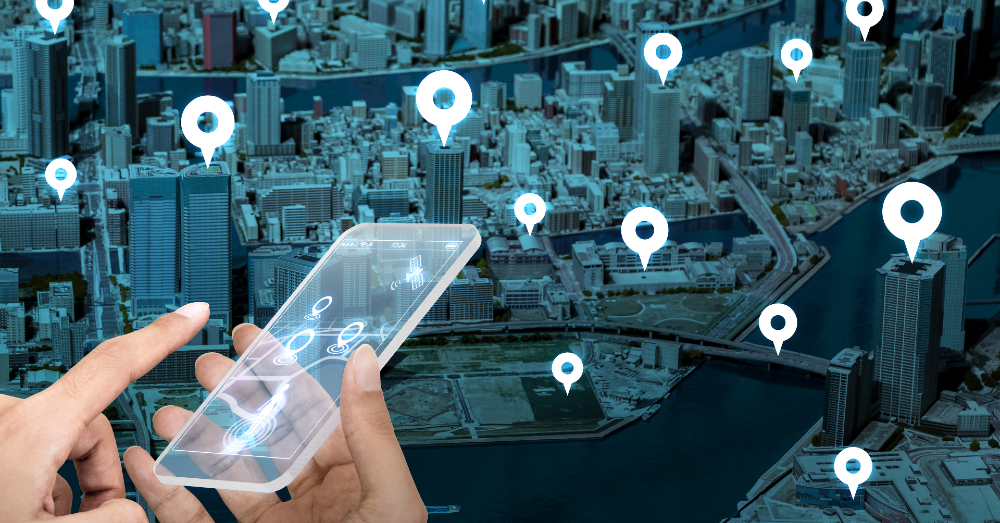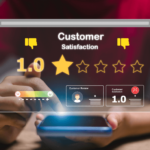
Whether operating a small, local store or a major chain with stores around the country, location-based marketing is an important tool.
This type of marketing uses location data to reach customers that are in close proximity to a store. The reach and marketing are done using regional events, local news, nearby landmarks, and organizations the customers are familiar with. If you’re not sure what to do, this guide should help you get started.
Five Types of Location-Based Marketing to Use
There are five types of marketing that you can employ that helps to entice a local audience to work with your business by buying your products or coming to your location. These five types of marketing are:
• Geotargeting
• Geofencing
• Beaconing
• Mobile Targeting
• Geo-Conquesting
While several of these strategies sound similar there are some key differences. Let’s discuss.
Locate the User Through Geotargeting
One of the most common forms of location-based marketing is Geotargeting. This process uses the IP address of the user and if a user has given an app permission to access their location they could receive a message from the app with push notifications when they are in proximity to a store.
The key benefit to Geotargeting is to increase the customer experience through personalized messages specific to their location. Both apps and users make use of this marketing every day. If you search for “hardware stores near me” you’re going to receive the stores that are nearest you as a matter of convenience and targeting to your geographic area.
Herd in Your Customers with Geofencing
While you’re not literally going to put up fences and round up the customers into a smaller area, the use of Geofencing as your location-based marketing strategy creates a boundary within a region to target audiences that enter the area. Once inside the “fence” uses will receive content, offers, and messaging from your company if they have set up permissions for your app to give them information.
Geofencing uses GPS technology and not the IP address to create the borders of the fence. Using this marketing, you can cover large areas within a specified perimeter to give customers information that could benefit them right away. This marketing uses real-time location which could result in shoppers seeing deals and sales that are taking place that day when near the store.
Send Out the Beacon and Bring Your Customers into the Store
Beaconing is a location-based marketing strategy that employs Bluetooth and Wi-Fi to connect with specified apps that are operating within range of the beacon. The beaconing targets existing customers within a small geographic area to send push notifications. An example of this marketing would be encouraging you to visit the concession stand if you’ve downloaded your ticket information at a sporting event.
Users have much more control when it comes to beaconing. They have to be opted-in and have their Bluetooth on for you to marketing to them through this process. This gives your business a more direct communication function with your users and a better opportunity to turn a message into a sale because of the interest and proximity of the customer.
Mobile Targeting is a Must in the Digital World
You may not realize it, but you’re likely using Mobile Targeting every day. Whenever you receive ads on your mobile device, that’s been done through mobile targeting. This is a common form of location-based marketing and it can be contextual to ensure you receive information you want at that time and where you are.
The use of mobile targeting occurs daily in social media ads, mobile games, and in local areas. This allows marketers to target users directly in their devices to create the connection needed to interest them and potentially create a sale from the process.
Conquer the World with Geo-Conquesting
It sounds like you’re on a mission to take over the world when you hear the term Geo-Conquesting, and maybe you are. This is a location-based marketing process that uses location data to turn prospects away from competitors. This may seem a bit shady, but it’s perfectly legal and it’s used often by businesses that compete in a local area.
Think of the number of car dealerships you pass on the same road in your town. Imagine if you received a message with a deal at a competing dealership when you take your mobile devices to another dealership location. That is Geo-Conquesting. This allows organizations to offer customers an option and it uses Geofencing to create a boundary around the competition to trigger the offers those customers can consider as an alternative.
This post may contain affiliate links. Meaning a commission is given should you decide to make a purchase through these links, at no cost to you. All products shown are researched and tested to give an accurate review for you.








